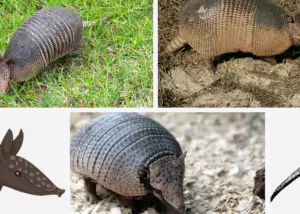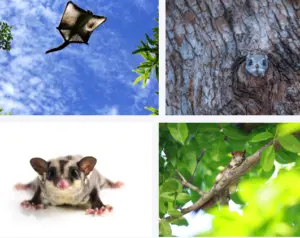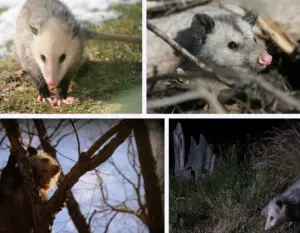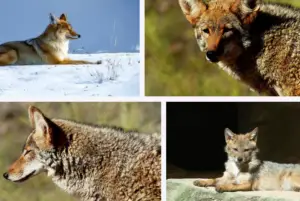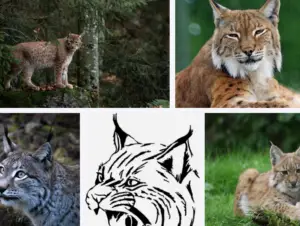Wild Animals in Atlanta Georgia

- By
- Aparna Patel
- |
- 3 Apr, 2023
- |
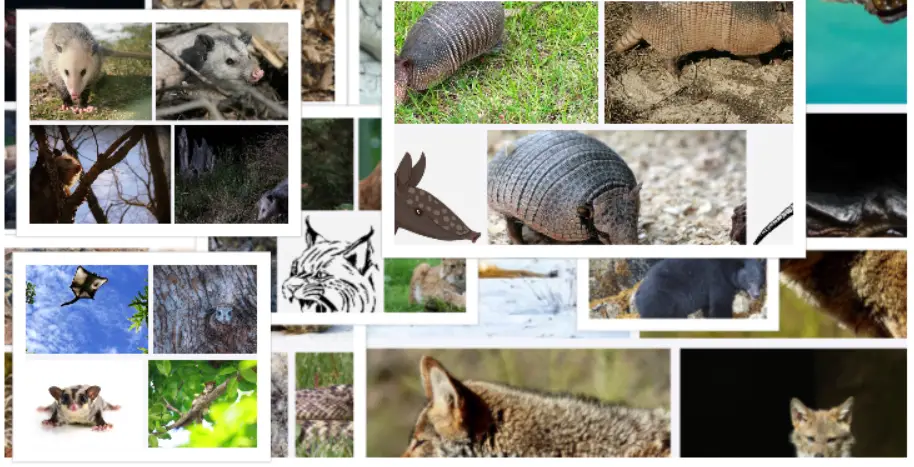
There are several strange and interesting animals found in Georgia, including some that can be found in the Atlanta area. Here are a few examples:
Table of Contents
1.Armadillo
These unusual animals are not native to Georgia but were introduced to the state in the mid-20th century. They are now a common sight throughout the state, including Atlanta Georgia in the Atlanta area.
Armadillos are not native to Georgia, but they have been expanding their range and can now be found in some parts of the state, including Atlanta. These small, armored mammals are known for their unique appearance and behavior, and they are fascinating to observe.
Armadillos are primarily nocturnal and are often seen digging in yards or gardens in search of insects and other small prey. They are also known for their ability to roll up into a ball when threatened, using their tough outer shell to protect themselves from predators.
While armadillos are generally harmless to humans, they can cause some damage to yards and gardens. They are known to dig holes and burrows, which can be unsightly and may pose a tripping hazard. In addition, armadillos can carry diseases, so it’s important to avoid contact with them and to keep pets away as well.
If you have armadillos in your yard or garden, there are several ways to deter them, such as using fences or netting to keep them out, removing potential food sources, and using repellents or other deterrents. In some cases, it may be necessary to call a professional pest control service to help remove armadillos from your property.
Overall, while armadillos can be an interesting and unique addition to the local wildlife in Atlanta, it’s important to take steps to minimize any potential damage or health risks they may pose.
2.Flying Squirrels
Georgia is home to two species of flying squirrels, the Southern Flying Squirrel and the Northern Flying Squirrel. These nocturnal animals can glide through the air using flaps of skin between their legs and bodies.
Flying squirrels are a type of squirrel that are found in Atlanta, Georgia, and other parts of the United States. They are called flying squirrels because they have a special membrane between their front and back legs, called a patagium, which allows them to glide through the air for short distances.
Flying squirrels are small and typically have gray or brown fur with large, dark eyes. They are nocturnal, so they are rarely seen during the day. They feed on nuts, seeds, and insects, and are known to nest in trees, often using abandoned bird nests or natural tree cavities as their homes.
While flying squirrels are generally harmless to humans, they can sometimes become a nuisance if they take up residence in attics or other areas of homes. They may chew on wires or other materials, and their droppings can create a mess and potentially spread diseases.
If you have flying squirrels in your home, it’s important to contact a professional wildlife removal service to safely and humanely remove them. It’s also important to seal up any entry points to prevent them from re-entering your home.
Overall, flying squirrels are an interesting and unique part of the local wildlife in Atlanta, but it’s important to take steps to prevent any potential damage or health risks they may pose if they become a nuisance.
Read More
3.Opossum
While not a strange animal per se, opossums are often misunderstood and are an important part of Georgia’s ecosystem. They are known for playing dead when threatened, but are actually quite adaptable and can be found in a variety of habitats throughout the state.
Opossums are a common sight in Atlanta, Georgia, and throughout much of the United States. They are the only marsupial species found in North America, and are known for their long, pointed snouts, hairless tails, and tendency to “play dead” when threatened.
Opossums are primarily nocturnal and are omnivores, feeding on a variety of foods including insects, fruits, nuts, and small animals. They are also known for their unique defense mechanism of “playing dead” when threatened, which involves lying motionless and appearing to be dead in order to avoid being attacked by predators.
While opossums are generally harmless to humans, they can sometimes become a nuisance if they take up residence in attics, garages, or other areas of homes. They may cause damage by chewing on wires or other materials, and their droppings can create a mess and potentially spread diseases.
If you have opossums in or around your home, it’s important to contact a professional wildlife removal service to safely and humanely remove them. It’s also important to seal up any entry points to prevent them from re-entering your home.
Overall, opossums are an interesting and unique part of the local wildlife in Atlanta, but it’s important to take steps to prevent any potential damage or health risks they may pose if they become a nuisance.
4.Coyotes
While not a strange animal, coyotes have become increasingly common in urban areas of Georgia, including the Atlanta area. They are typically nocturnal and can be heard howling at night.
Coyotes are a relatively new addition to the wildlife population in Atlanta, Georgia, and are becoming more common in urban and suburban areas. Coyotes are medium-sized canines that have grayish-brown fur and bushy tails. They are highly adaptable and are known for their ability to survive in a variety of environments, including urban areas.
Coyotes are primarily nocturnal and are opportunistic feeders, eating a wide range of food including small animals, insects, fruits, and carrion. They are also known to prey on pets and livestock, so it’s important to keep pets indoors or supervised and to take measures to protect livestock if you live in an area where coyotes are known to be present.
While coyotes are generally wary of humans, they may become more bold and aggressive if they become habituated to people and begin to associate them with food. It’s important to avoid feeding coyotes or leaving out food sources that may attract them.
If you encounter a coyote, it’s important to give it plenty of space and avoid approaching it. If a coyote appears to be exhibiting aggressive behavior, such as approaching people or acting boldly during daylight hours, it’s important to contact local wildlife authorities or a professional pest control service to safely remove it.
Overall, coyotes are an interesting and adaptable part of the local wildlife in Atlanta, but it’s important to take measures to protect pets and livestock, and to avoid providing them with food or other incentives to become habituated to people.
5.Bobcats
These elusive predators are found throughout Georgia, including in the Atlanta area. While they are generally not a threat to humans, they can be dangerous if cornered or provoked.
Bobcats are a native species of wild cat that can be found in the Atlanta, Georgia area, as well as throughout much of North America. They are medium-sized cats, typically weighing between 15 and 30 pounds, with distinctive tufted ears, short tails, and spotted fur.
Bobcats are primarily nocturnal and are known for their excellent hunting skills, feeding on a variety of prey including rabbits, rodents, birds, and other small animals. They are generally solitary animals and are rarely seen by humans.
While bobcats are generally not a threat to humans, they may become more bold and aggressive if they become habituated to people or if they feel threatened. It’s important to avoid approaching or feeding bobcats, and to keep pets indoors or supervised to prevent them from being attacked.
If you encounter a bobcat, it’s important to give it plenty of space and avoid approaching it. If a bobcat appears to be exhibiting aggressive behavior, such as approaching people or acting boldly during daylight hours, it’s important to contact local wildlife authorities or a professional pest control service to safely remove it.
More Post
- What is Georgia, USA Known for Producing?
- What Fruit is Georgia, USA Known For?
- Why is Georgia known as the peach State?
Overall, bobcats are an important and fascinating part of the local wildlife in Atlanta, but it’s important to take measures to prevent conflicts with humans and to ensure their continued survival in the wild.
It’s important to remember that these animals are a natural part of Georgia’s ecosystem and should be respected and admired from a safe distance.
Search Posts
Latest posts
-
4 Mar, 2024
Can I accidentally miss the in-flight food?
-
4 Mar, 2024
How can I do a "broad" search for flights?
Popular posts
-
5 Mar, 2024
Why prohibit engine braking?
-
5 Mar, 2024
How to avoid drinking vodka?
